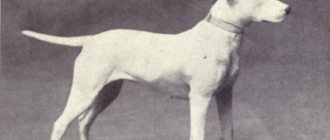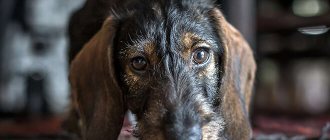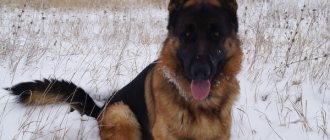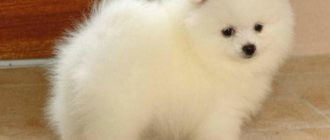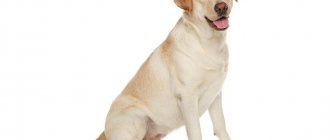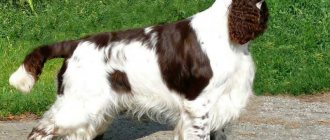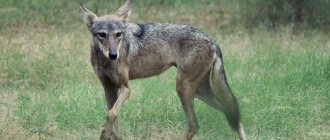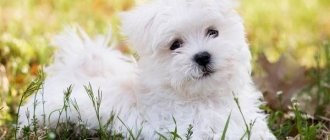Dossier
Adult height: 19-23 cm. Weight: from 2 to 2.5 kg. Characteristic colors: black, brown and blue and tan. Coat length: short. Life expectancy: from 12 to 14 years. Advantages of the breed: balanced, intelligent, active. Difficulties of the breed: hostility towards rodents. How much does a Prague Rat cost: $1000 and above. Classification: small breed; companion dog.
Prices for these breeds
The Prague rat is an expensive breed.
Not so much because of the origin, but because of the number of dogs.
The breeding of the breeds is closely monitored by the Czech Breed Club and, according to sources, there are currently about 2,500 individuals in the world.
The cost of a puppy on average reaches 1000 EUR.
The price of a toy terrier ranges from 175 to 615 EUR.
However, in addition to the pedigree and reputation of the kennel or seller, other factors also influence the cost of a toy terrier.:
- size (the smaller the puppy, the higher the price tag)
- coat color (red – cheaper);
- coat length (smooth-haired are inferior to long-haired);
- title of parents (offspring of champions are more expensive).
Origin story
When exactly the Prague Rat breed appeared is still unknown, but the first mentions of it date back to the 8th century. There is a legend that these small dogs saved the Czechs from a terrible plague epidemic that broke out on the continent in the 13th century. Then the Czech Republic was captured by hordes of rats, spreading the infection everywhere. The small and agile rat could penetrate the most inaccessible places and easily deal with infected rodents.
Then from brave defenders they turned into favorites of the monarch and society ladies. They began to carry rats in their arms and give them to foreign guests. However, during the decline in the Czech Republic, the popularity of this breed also sharply decreased. The number of rats decreased sharply, dogs almost ceased to exist.
Only after a while did cynologists begin to make efforts to restore the Prague Rat Dog, but to this day this work is not yet considered completed. The Fédération Cynologique Internationale still considers the rat to be an unstable breed and does not recognize it, although other kennel clubs and organizations have already done so.
Purpose
Ratlikov, as the Prague ratters are also called, were primarily used to exterminate rats. That is why these dogs have such names. In medieval times, they were actively used in rat fights. Today they are excellent companion dogs that are very popular among the fairer sex. Ratliks are excellent athletes and love to participate in dog competitions.
Character
The Prague Rater is a very smart and balanced dog. He will not bark over trifles, which is usually characteristic of dogs of his size. But if a stranger comes to your house, you will immediately know about it. This breed is very distrustful and wary of strangers and will defend its territory if necessary.
Of the domestic animals, the ratlik finds a common language best with cats, but any rodent encountering a ratlik will face inevitable death. These small dogs are very active and agile, but they will never bore their owners. These are very loyal dogs that treat all family members with love and friendliness.
Photo and video
Prague Rat Dogs are charming, kind, smart and brave dogs. When planning to have a pet of miniature size, it is recommended to take a closer look at this breed.
How to choose a puppy
The Prague Rat Dog is a breed for which you will have to pay a considerable amount of money, so it is highly undesirable to buy a dog from dubious sellers. It would be best to contact a nursery with bona fide breeders. Please note that this breed is often confused with the Toy Terrier.
But the Prague Rat Dog and the Russian Toy Terrier have some differences . For example, the ratlik has a more muscular build and a pear-shaped head, while the toi is less muscular and larger in size. These breeds are also different in character: the toy terrier is a decorative breed, and the ratlik has the genes of a hunter.
When choosing Prague Ratdog puppies, pay attention to the condition of their coat, eyes and ears. A healthy puppy should be moderately well-fed and at the same time active. At the nursery, you will be given all the necessary documents and certificates, as well as recommendations for caring for the puppy. How much a Prague rat rat costs will depend on its pedigree and prospects for participation in competitions.
Who to choose for keeping in the apartment
Before buying a pet, it is important to summarize how the Prague Rat Dog differs from the Toy Terrier, especially if the owner lives in a small apartment. Ratlik was bred for hunting work in a large house. It was used to catch mice, rats and squirrels. Toy was bred for decorative purposes and living in an apartment, so it is preferable to choose it for an urban environment. Despite the miniature size of both breeds, the rat will need long street walks, preferably in a green park area, and fun games. Key differences between the two dog breeds:
- the rat is a hunting species, the toy is a decorative species;
- the ratlik was bred in the Middle Ages, and the toy terrier - in the mid-50s of the 20th century;
- toy is larger and can reach up to 28 cm at the withers;
- the Czech breed has a more elongated and angular muzzle;
- a Russian representative can weigh more than 3 kg;
- Ratliks are more resilient, restrained, courageous and dexterous.
Care and maintenance
The Prague rat is not at all picky in terms of care. To keep his coat in good condition, simply brush it with a natural bristle brush from time to time. Once a week you should check your dog's ears, eyes and teeth. It is also necessary to take preventive measures against fleas and worms.
Carefully trim your pet's nails occasionally. Ratliks are not at all adapted to cold and damp weather. During a walk, this dog needs to wear warm overalls, and after it, wipe the paw pads with a damp towel.
Dog care
Due to the rat's short coat, grooming it requires minimal effort.
Features of living in an apartment
The little rat gets along in apartment conditions without any problems
Ratlik can be kept even in small apartments. Due to the compact size of the dog, it does not require much space. Organize a separate place for your pet, away from the passage and heating devices.
The rat can be trained to use a tray or diaper, which will reduce the regularity of walking.
Important! Make sure that there are no drafts in the apartment; the rat is quite sensitive to them.
Hygiene rules
The rat must be combed with a special brush
Caring for a dog's coat is extremely simple. The coat should be brushed daily with a special brush for short-haired dogs, then wiped with a piece of suede material. It is not recommended to bathe ratliks unless necessary, since these dogs are prone to colds. It is not necessary to use cosmetics during water procedures.
Monitor the condition of your pet's claws. To prevent him from experiencing discomfort, trim them every month. As discharge accumulates, treat the area around the eyes with a napkin soaked in a special lotion (Rosinka, Chamomile). Clean your ears once a week with a moistened cotton pad.
Rat rat teeth require special care, as representatives of this breed are prone to periodontitis. Regular cleaning twice a week will help keep your pet healthy. Use special pastes for this purpose (Trixie, NutriVet).
Important! It is highly undesirable to brush your dog's teeth with products intended for humans.
Nuances of nutrition
The rat must be protected from overeating
The Prague rat cannot control its appetite on its own, so it needs to be limited in food. To avoid overeating, the feeding procedure should last no more than 15 minutes. Then remove your pet's bowl, even if there is still food in it. Dog breeders recommend feeding the rat with natural food, but you can also use dry mixtures.
Your dog's diet should include the following foods:
- lean meat - chicken, rabbit, veal, beef;
- porridge - millet, rice, buckwheat;
- sea fish;
- kefir, fermented baked milk, cottage cheese;
- boiled eggs;
- vegetable oil;
- vegetables - carrots, zucchini, beets, pumpkin.
The following are contraindicated for animals:
- sausages;
- fried, fatty foods;
- legumes;
- potato;
- spices;
- confectionery.
The main part of the diet (2/3) should be meat. Fish can be given 2-3 times a week. It is not advisable to feed your pet milk, but you should pay attention to the dog’s digestive characteristics. Since the rat dog leads a fairly active lifestyle, an adult dog requires three meals a day. Puppies are fed more often. Up to three months of age, the baby should receive food 5-6 times a day, up to 6 months - 4 times, after six months - 3 times.
Walk
Ratliks love active walks, but pets should not become overcooled
You should walk your rat 1-2 times a day for 30-60 minutes. But the ratlik will not refuse a longer stay on the street, because he needs to splash out the accumulated energy. The little rat will happily run, play with a ball, or take part in other outdoor games. In the cold season, you need to take the rat outside in overalls. Wind and low temperatures can negatively affect his health. During the walk, avoid contact with large breeds.
Important! The rat is not aware of its size and can enter into a fight even with a large dog.
Pregnancy and childbirth
During pregnancy, your dog needs special care
Puppies in small breeds, to which the Prague rat belongs, appear between 60 and 65 days after mating. Pregnancy can be determined at the beginning of the second month. In the fifth week, the female’s mammary glands enlarge and her belly becomes rounder. Puppies at this stage can already be felt with fingers. But you should not perform such diagnostics yourself, you can damage the fruits. It is better to entrust this procedure to a veterinarian.
During the first half of pregnancy, there is no need to change the bitch's lifestyle or diet. From the second month, reduce physical activity. Make sure that the dog does not make jumps or other sudden movements. Increase the amount of protein food (meat, dairy products, fish) in your pet’s diet. You need to prepare for the upcoming birth about a week in advance.
To help your dog, you will need clean diapers, which can be made from old bedding. It is advisable to iron them with an iron. Also prepare napkins, a baby box, a bowl for afterbirth, threads, sterile scissors, and a terry towel.
From day 60, start measuring the female’s body temperature. The day before birth, the levels drop to 36–37˚C. The onset of contractions can be determined by the behavior of the bitch. She becomes restless, whines, scratches the floor, tears up the bedding, and refuses to go for a walk or eat. The onset of labor is indicated by the appearance of sticky mucous discharge. When the second stage approaches, which is accompanied by the onset of pushing, the dog can lie on its side or take a standing position. Some females rest their paws against the wall of the box. At this stage, puppies are born.
The dog owner's actions are as follows:
- Many females take care of the newborn on their own, but if the bitch does not show interest in the puppy, the owner must take on this function: after the birth of the first baby, the amniotic sac must be removed, the newborn wiped with a diaper and the umbilical cord cut.
- The umbilical cord is cut at a level of 2 cm from the baby. If bleeding occurs, bandage it with thread.
- Place the puppy next to the dog so that he begins to suckle colostrum. This helps stimulate uterine contractions.
- If your baby shows no signs of breathing, rub him with a towel.
- Collect the afterbirths that come out after each cub in a separate container. If their number does not correspond to the number of puppies, contact a veterinarian, otherwise the dog may die.
Video: Ratlik’s birth process
Attention! The video contains shock footage.
Nutrition
Only premium food is suitable for Ratlik due to possible problems with the gastrointestinal tract. If you prefer natural products, then you should completely exclude fatty meats, sweets and spicy foods. Also, rats should not be given bones. Introduce fermented milk products, vegetables, fruits and lean meats and poultry into his diet.
Important! The Prague rat is prone to overeating, so carefully monitor the amount of food he eats.
An adult dog will only need to be fed small portions 2-3 times a day.
Training
You need to train the Prague rat rat immediately after he comes into your home. Ratliks are quite smart dogs, they are easy to train. They can even be taught a few tricks. Also, the dog very quickly gets used to the tray and remembers its name. The main thing is to treat them with affection, do not show aggression and reward your pet for correctly following commands.
Advantages and disadvantages
Raltik will become an excellent friend and companion for your family. He will never bother his owners, but if necessary, he will always be there. This breed is very good with children and loves to play with them. Rat cats can live both in a private house and in an apartment. They will not cause you any trouble, because they are not very picky about their care and rarely give a voice.
These are brave dogs that will come to your defense if necessary. Their main and probably only drawback is their attitude towards rodents . If the rat meets a hamster, squirrel or mouse, you can’t stop him.
What do you know about the Prague Ratdog breed? What feedback can you leave about the character of this dog? Share your opinions and stories in the comments.
Health and illness
A dog with healthy genetics and proper care can live 14 years. In order for rats to be active and feel good throughout their existence, they need to be regularly shown to a veterinarian. It is recommended to do this at least several times a year. You should also examine your dog at home. The weak point of this breed is its teeth.
During the cold season, all dwarf breeds often suffer from colds. In order for the dog not to get sick, he needs to be dressed comfortably. And also give him mineral vitamin complexes every six months. They will help strengthen your immune system.
Rats should be protected from injury and fractures. Most often these dogs injure their paws. Typical ailments for them are luxation of the kneecap, Perthes disease, hypoglycemia.
When monitoring your dog’s health at home, you need to remember the most common ailments:
- overweight;
- intestinal obstruction;
- colds;
- inflammation in the oral cavity.
At the first symptoms or suspicions, the animal should be shown to a veterinarian. Only he will make the correct diagnosis and also prescribe treatment. Timely provision of qualified assistance can significantly alleviate the disease and speed up recovery.
